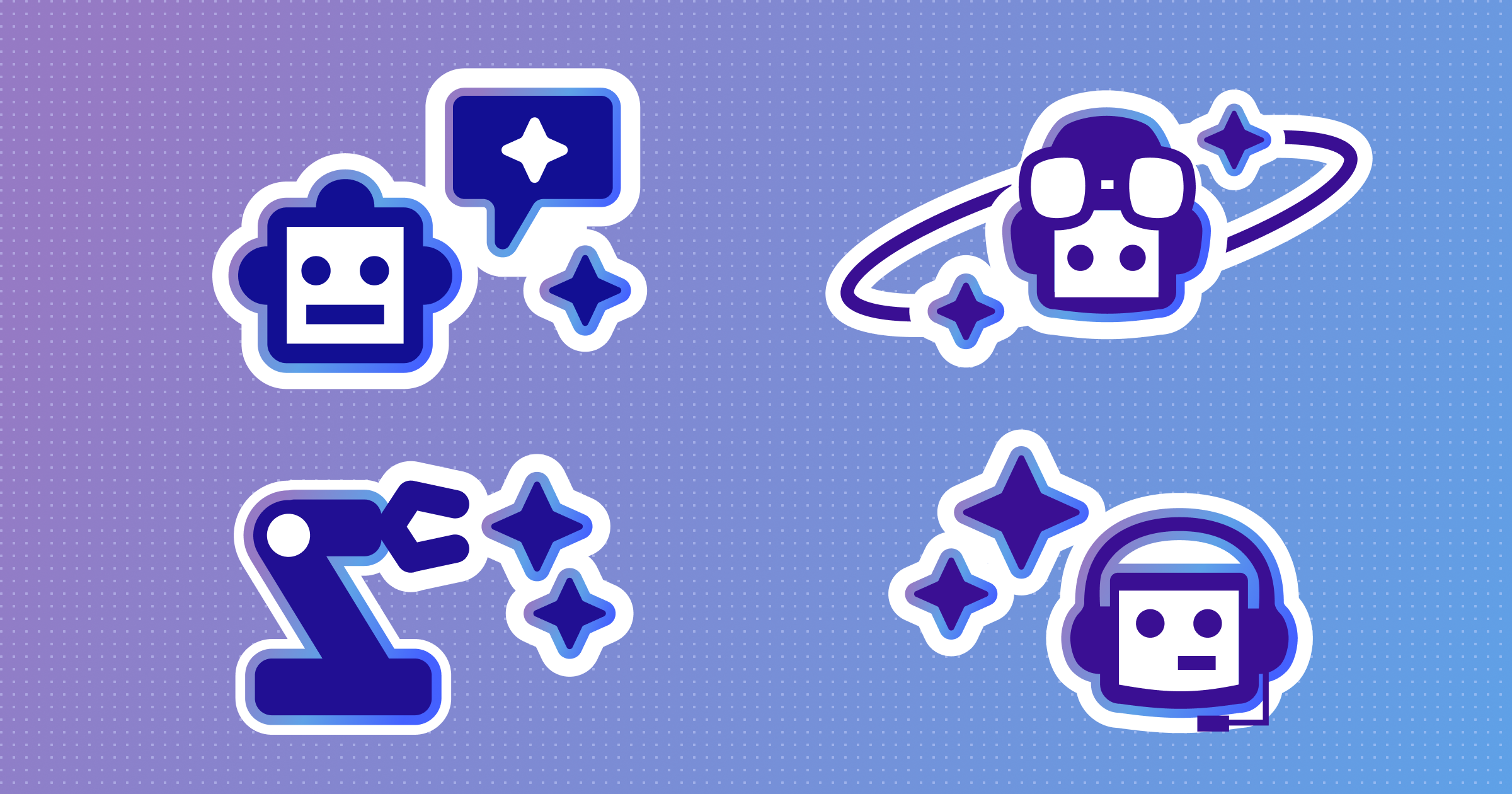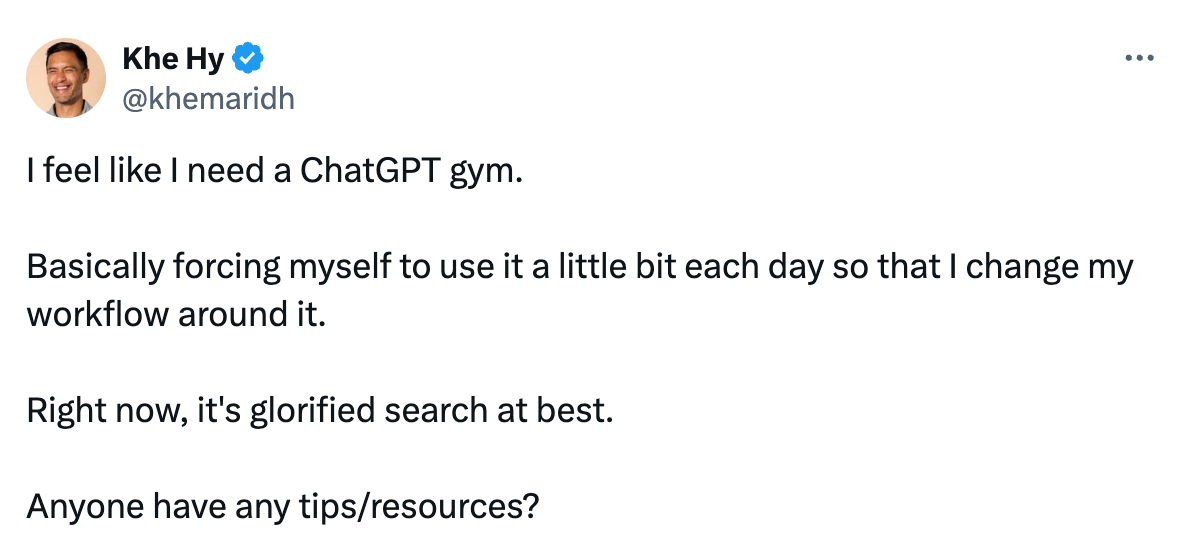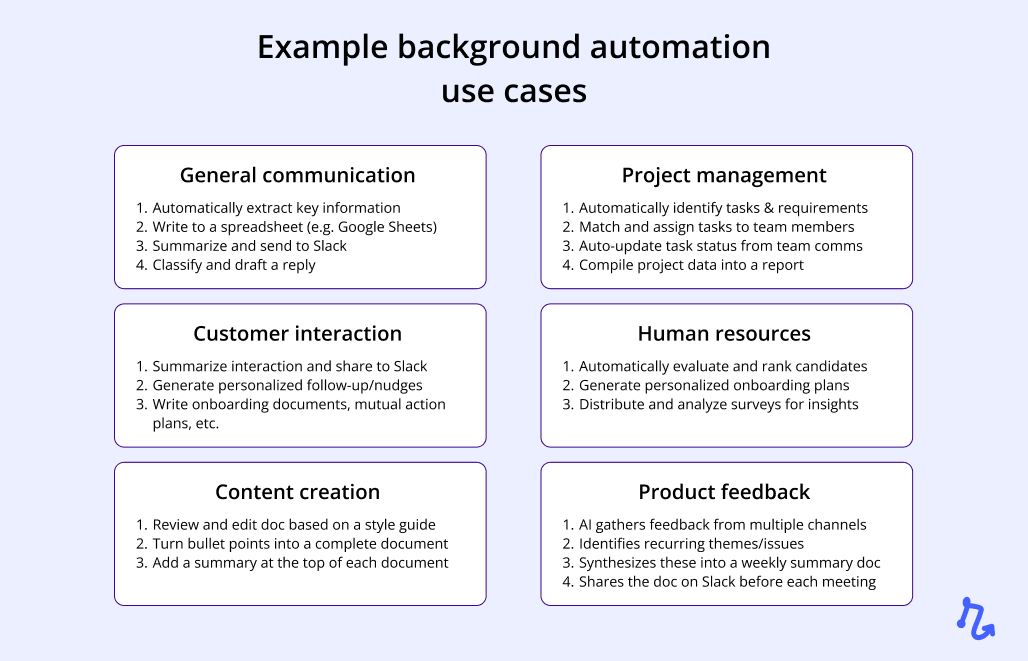
I’ve been working on AI-powered productivity tools for well over a decade. My first startup, Timeful, created an AI-powered digital calendar that helped users automatically schedule time for their most important tasks, projects, and habits.
After we were acquired by Google, I led the product teams for Gmail, Google Calendar, and other products, and one of my main focus areas was incorporating AI into those products to help save users time. This work included Smart Reply, Smart Compose, Nudging, and many other features.
As someone that’s worked in this space for a long time, it’s really exciting to see the broader hype about how AI is going to transform work. But despite the buzz, I see lots of people questioning how to actually use AI on a day-to-day basis:

So I thought I’d share a quick overview of three ways to incorporate AI into your day to day work, along with the pros and cons of each and a few example use cases. In short, there's a lot more to it than chatbots
The Three Models of AI
Broadly speaking, there are three product models for taking advantage of AI:
1. The chatbot model. This is a prompt-based experience in which you visit a dedicated site to type something in and wait for the chatbot to type something back. You've probably used this model with ChatGPT, but there are many others including Gemini and Claude.
2. The co-pilot model. This is an in-product experience in which AI provides inline assistance to help you complete actions, like composing emails faster with Gmail's Smart Compose.
3. The automation model. This approach automates processes in the background, streamlining your workflow without ongoing manual input.
Let's dive deeper into each model and explore how they can enhance your work.
The chatbot model: best for research and education
Examples: ChatGPT, Gemini, Claud
What it’s great for:
- Quickly accessing a wide array of information
- Generating human-like text and engaging in conversations
- Customizing and adapting educational content
What it’s not great for:
- Executing specific actions in external systems
- Real-time data processing and decision-making
- Direct integration into automated workflows (due to the need for manual interaction)
If you’re looking to do research on a topic or get one-off assistance in translation or editing, a chatbot like ChatGPT or Claude is a great tool.I’ve found they’re great for market analysis, unraveling complex subjects in layman’s terms, and making suggestions about how I can improve my writing on a specific topic
While the general version of ChatGPT is limited to broad, public information, there’s a really cool new technology called custom GPTs that allow you to build a custom model specifically around your company’s internal knowledge base.
I’ve found this really useful for things like user research insights, answers to internal technical questions, and summaries of company processes. In the future, most companies will have at least one custom GPT (e.g. a custom chatbot that answers common questions about company policies).
Tips for getting the most out of chatbots in general:
- Be specific. Use direct commands like “summarize” or “translate” to guide the chatbot to exactly the output that you want.
- Provide context. Help the chatbot understand what their role and job is, along with other information you might give to a person performing the task.
- Follow up. Use follow-up questions to dive deeper into topics or clarify answers.
Tips for getting the most out of custom GPTS:
- Organize and preprocess your data to ensure your model is trained on the most relevant and high-quality information available.
- Regularly update your model with new data and insights to keep it as accurate and helpful as possible.
The AI co-pilot model for in-app productivity
Examples: ClickUp AI, Github Co-pilot, Notion AI
What it’s great for:
- Accelerating routine tasks and making suggestions
- A “side-kick” that helps you get the most out of individual apps
- Improving the accuracy and speed of written communications
What it’s not great for:
- Use cases that cut across products
- Automation needs that should run in the background
AI co-pilots are integrated experiences built into existing tools. They offer real-time suggestions and automations where you work, and are best thought of as the Robin to your Batman, helping you with mundane tasks and catching any mistakes you might have miss—think editing emails, coding, or organizing tasks.
Back when I was the product lead for Gmail, we worked on a number of features in this spirit including Smart Reply, Smart Compose, and Nudging.
These co-pilots are much easier to adopt than chatbots as they appear where you’re already working, so you don’t need to remember to go visit a new destination or change your workflow.
They also make it easy to provide human oversight, as you can typically edit the results of the AI output before it gets used (e.g. in an outgoing email). Copilots can be powerful accelerators to save you time in context, and everyone should turn on and explore the AI features in the products they use every day.
Tips for making the most of AI co-pilots:
- Focus on targeted tasks that are time-consuming and can be done well by AI. Pinpoint activities where AI co-pilots can significantly enhance efficiency. For example, drafting similar email replies or writing boilerplate code.
- Combine AI Input with human checks. Ensure AI-generated outputs adhere to your quality standards, especially for external communications.
The automation model: for seamless background operations
What it’s great for:
- Streamlining complex workflows across multiple platforms without manual oversight.
- Automating repetitive tasks such as data entry, scheduling, and email responses.
- Providing consistent and timely customer service through automated messages and follow-ups.
What it’s not great for:
- Interactive research or Q&A experiences that are better suited to chatbots.
- Specific actions in single products that would be better suited to copilots
For most businesses, harnessing AI for background automations is the easiest and most impactful way to benefit from AI. These powerful systems work silently, automating everything from routine data handling to complex customer interactions, freeing up you and your team to concentrate on the bigger picture, like strategic decision-making and creative tasks. This "set it and forget it" approach means once you configure your automations, they run independently, providing benefits without any additional effort.
If you already have automations set up in a tool like Zapier, Make, or Relay.app, think about how you can add an AI-powered step to replace something that you currently do manually. For example, I have a workflow that automatically saves new invoices into a table, but I still had to add the amount and due date automatically. With AI, I was able to replace that manual step.
Read: How to use AI for automated expense tracking (the easiest way to get started with AI)

The one downside of this approach in Zapier and Make is that you don’t get a chance to double-check what the AI has done, so you may not be able to use it for higher-stakes use cases.
With Relay.app, on the other hand, you can easily add a human in the loop into your automation to approve or customize whatever the AI has done. This allows for human insights in processes where AI alone isn't enough, ensuring that tasks requiring human creativity, empathy, or decision-making retain the personal touch necessary for success, blending the best of both worlds to optimize your business operations.
Tips for using AI in your repeated automations
- Identify opportunities in your most frequent automations. If an automation only runs once a year, it may not be worth incorporating AI, but if it runs 10 times a day, that will save you a ton of time.
- Focus on things AI is great at. AI is terrific at extraction, summarizing, and classification, so those are the easiest places to start.
- Add a human in the loop for high-stakes use cases. If you use Relay.app, you can ensure that you’ll have the ability to double-check or edit whatever the AI has done before proceeding with the rest of the automation.
Try Relay.app for free.
Make AI work for you
My goal with this article was not to say that you should only use AI in one way or another, but that different types of AI systems are good for different things. Use chatbots for research, use copilots to accelerate common tasks, and use AI-powered automations to get work done in your sleep.
For most businesses, I think that AI in repeated automations (with a human-in-the-loop for oversight) is going to be both the easiest and most impactful way to adopt AI, and I’m eager to help. If you’d like to give in a shot in Relay.app, feel free to connect with me on LinkedIn or email support@relay.app
Related reading

